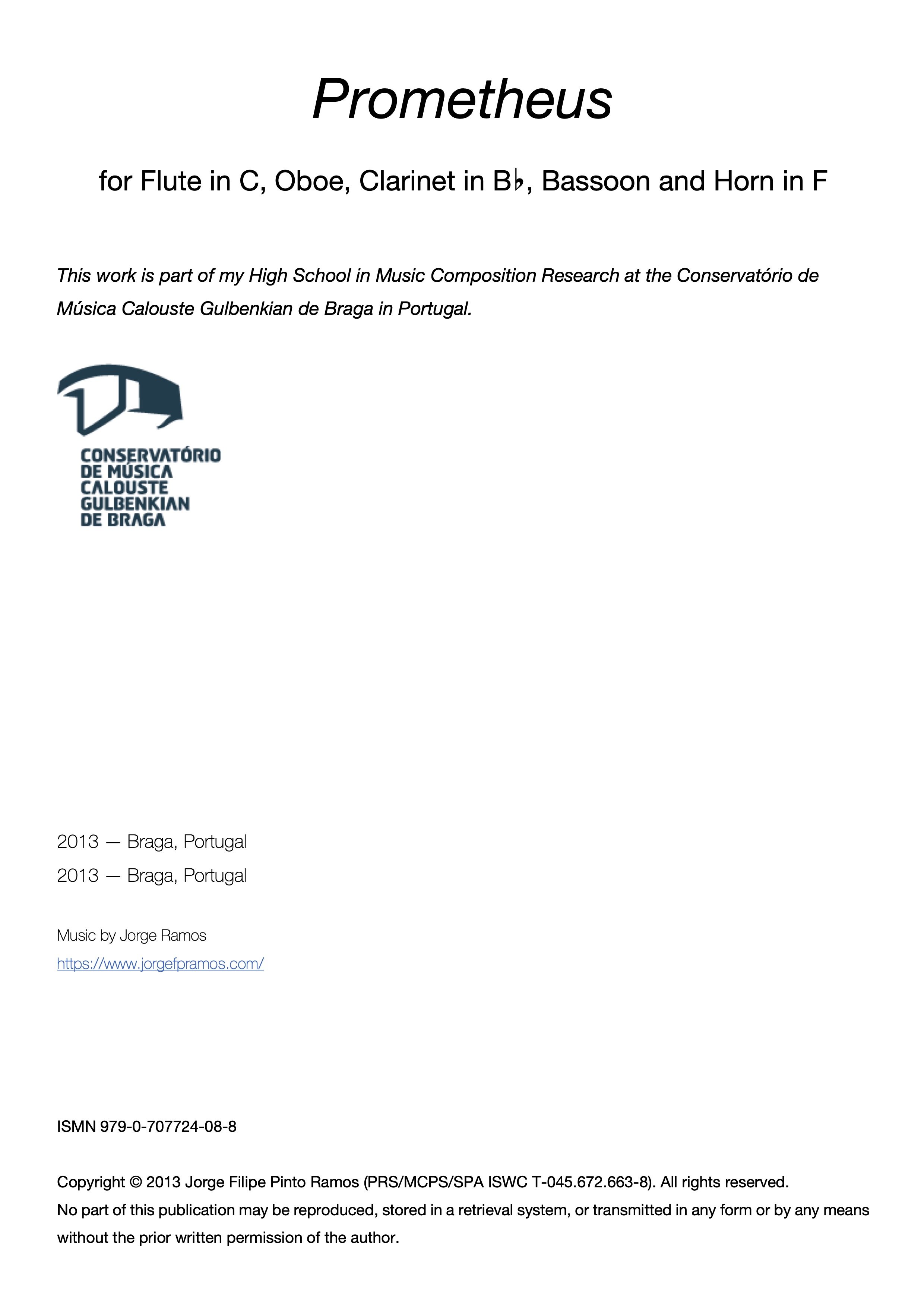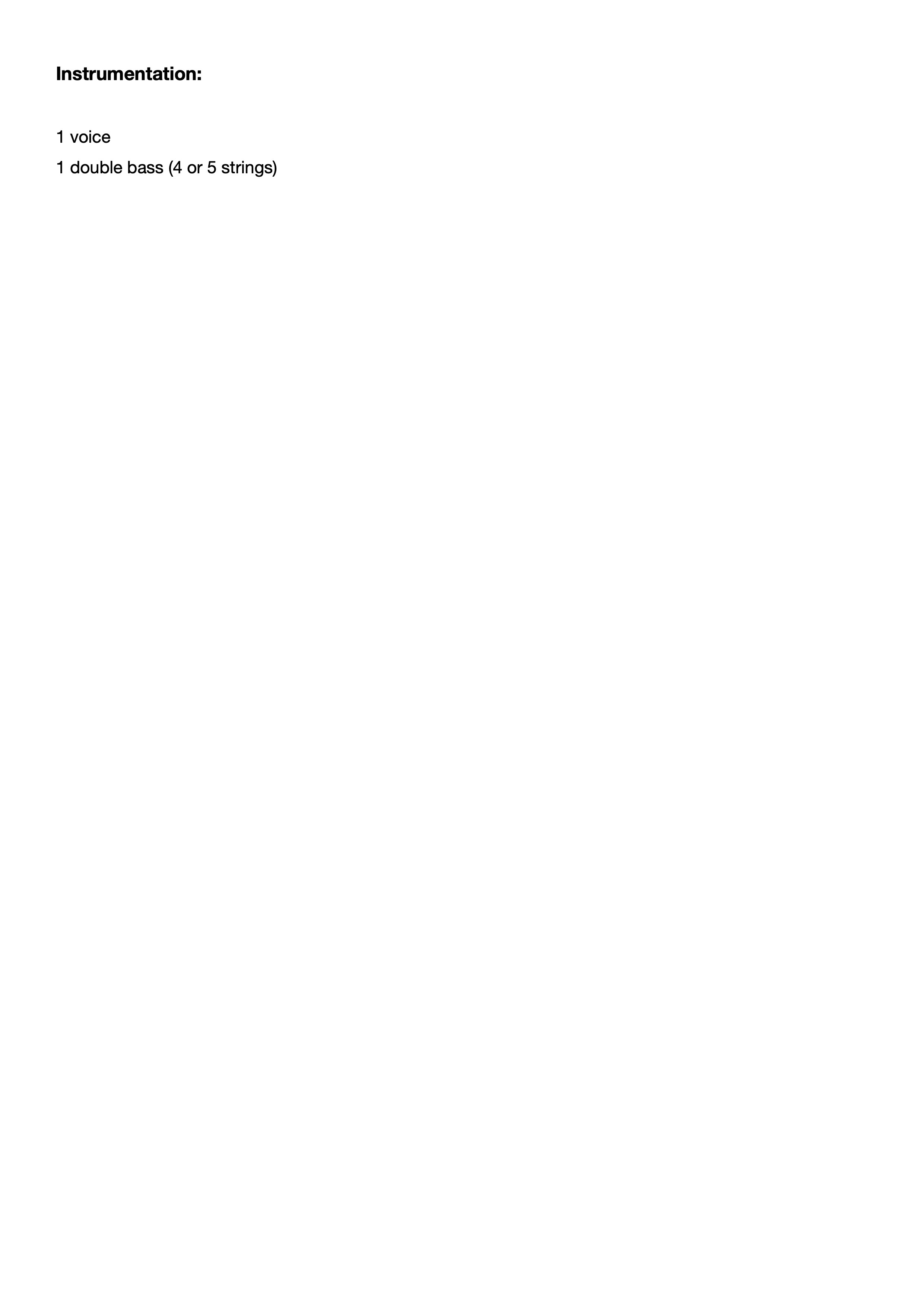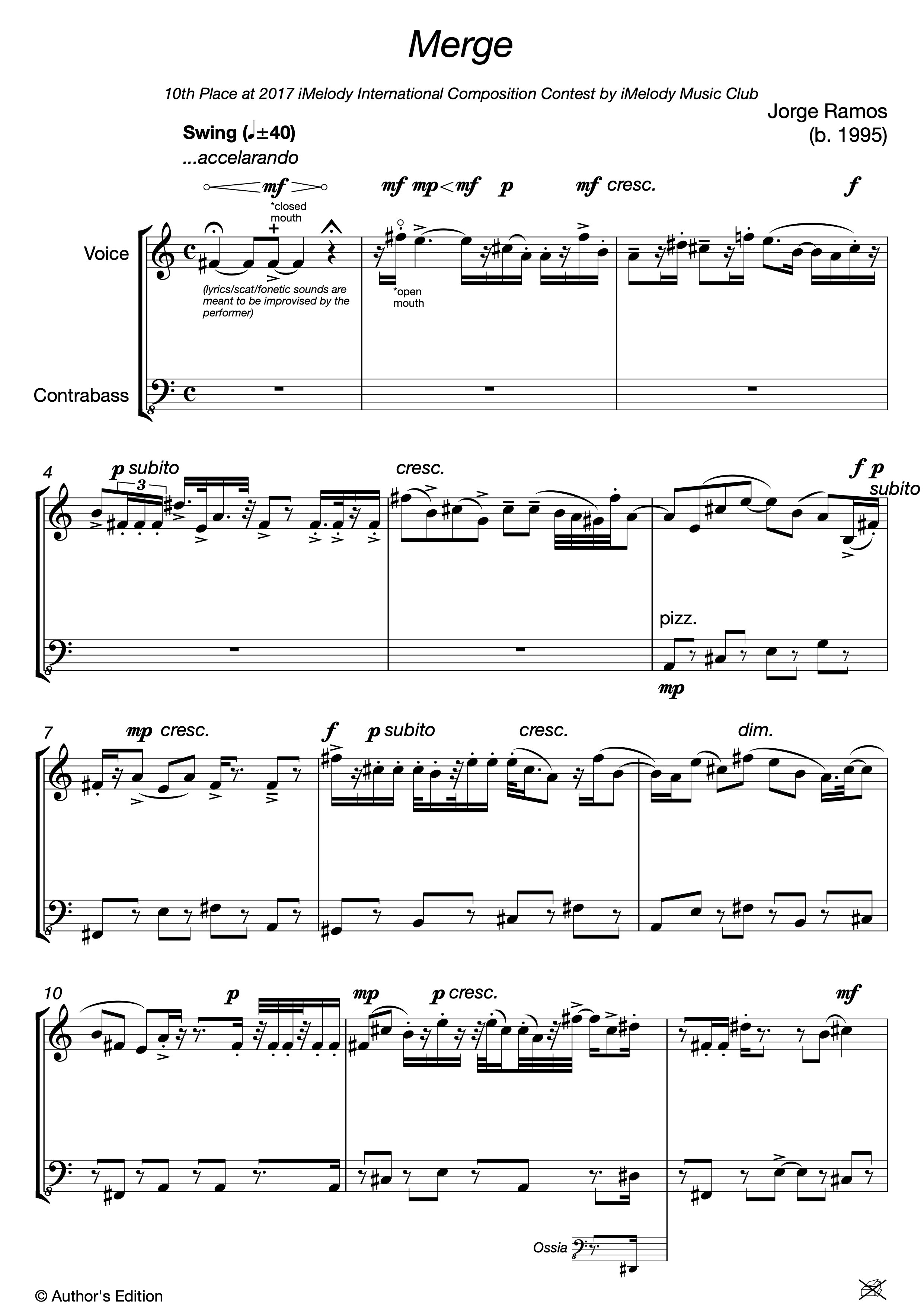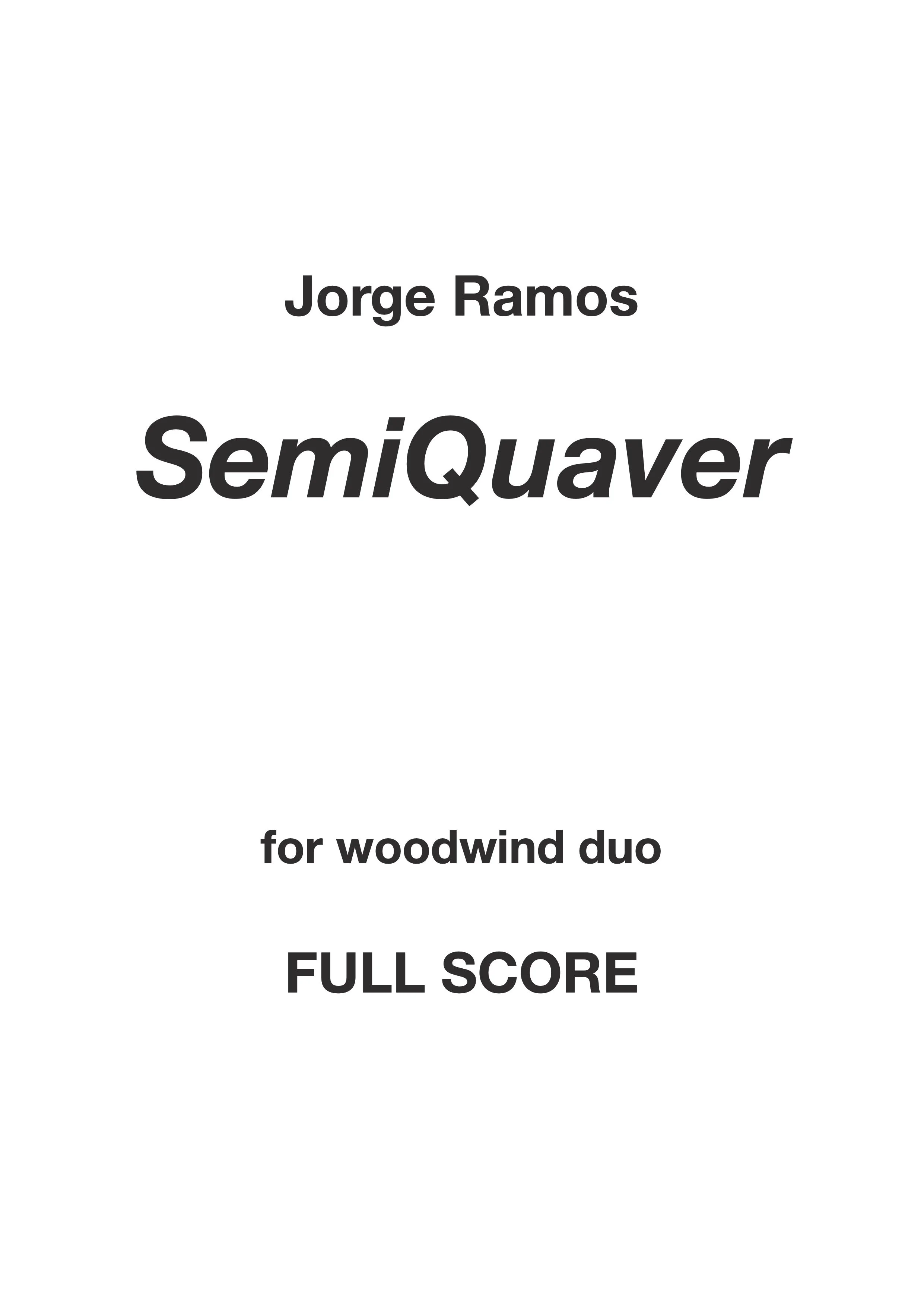 Image 1 of 4
Image 1 of 4

 Image 2 of 4
Image 2 of 4

 Image 3 of 4
Image 3 of 4

 Image 4 of 4
Image 4 of 4





Semiquavers and 6 A♭'s
Programme notes
The piece is an expansion of the enunciation in which there is a game between the piano and the cello, as the semiquavers passages and at the same time they exchange with the accompaniment, both passages based on the enunciation come to an end (bar 14) in which there is a hoquetus and then the piano enters with the notes of the enunciation in the right hand and the left hand doing the reverse of the right hand like a mirror, while the cello follows the enunciation accompanying the piano, which does a rhythmic decelerating until the end. The whole piece is based on the enunciation and multiples of 18, in which the only things that break the rule are the use of sixteenth notes (associated with the number 4) and the use of six A flats, originating the name of the piece, mathematics is present throughout the piece as the minims with a dot (3) in the accompaniment, the use of six A flats (6), the end of the accompaniment at bar 12 (12), the use of triplets (3), and then ending with rhythmic deceleration in the piano, and finally ending at bar 18 (18).
Written in 2013 as part of my High School in Music Composition at the Conservatório de Música Calouste Gulbenkian de Braga (PT).
© PRS/MCPS/SPA ISWC T-304.733.793-5
Are you performing this work? Submit your performance details to be featured in the upcoming events!
Scroll down for recording ↓
Programme notes
The piece is an expansion of the enunciation in which there is a game between the piano and the cello, as the semiquavers passages and at the same time they exchange with the accompaniment, both passages based on the enunciation come to an end (bar 14) in which there is a hoquetus and then the piano enters with the notes of the enunciation in the right hand and the left hand doing the reverse of the right hand like a mirror, while the cello follows the enunciation accompanying the piano, which does a rhythmic decelerating until the end. The whole piece is based on the enunciation and multiples of 18, in which the only things that break the rule are the use of sixteenth notes (associated with the number 4) and the use of six A flats, originating the name of the piece, mathematics is present throughout the piece as the minims with a dot (3) in the accompaniment, the use of six A flats (6), the end of the accompaniment at bar 12 (12), the use of triplets (3), and then ending with rhythmic deceleration in the piano, and finally ending at bar 18 (18).
Written in 2013 as part of my High School in Music Composition at the Conservatório de Música Calouste Gulbenkian de Braga (PT).
© PRS/MCPS/SPA ISWC T-304.733.793-5
Are you performing this work? Submit your performance details to be featured in the upcoming events!
Scroll down for recording ↓























